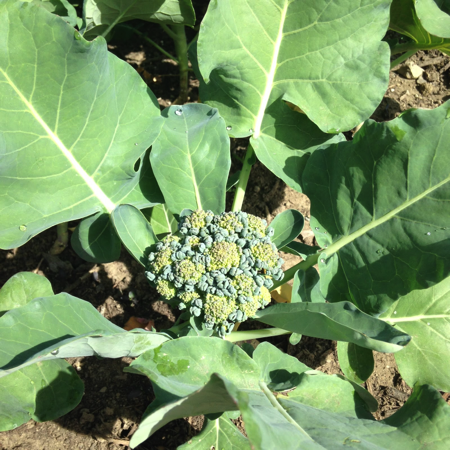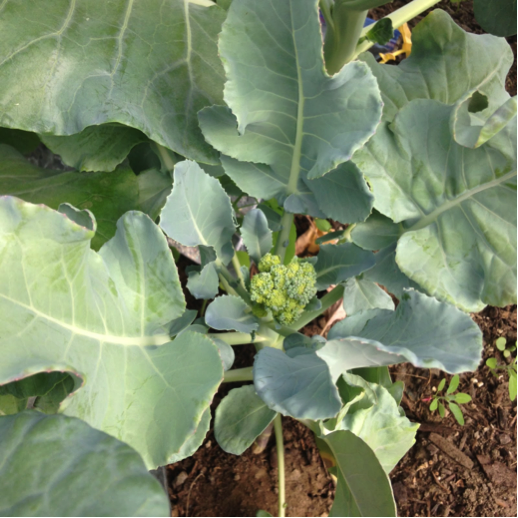Heat Waves and Your Veggies
Friday June 17th, 2016
On Monday, June 13th, through Thursday, June 16th, we manually induced a heat wave inside of the high tunnel. A heat wave can be described as at least three consecutive days with temperatures over 90 degrees Fahrenheit for at least 6 hours each day. For our purposes, this heat wave was four days at the target temperatures between 90 and 96 degrees. Though the fans in the high tunnel will turn on once the inside temperature reaches above 93 degrees, we are able to achieve these high temperatures through adjusting the height of the sides of the tunnel, trapping the heat inside. In addition to raising daytime temperatures, we also covered the broccoli with a row cover at night, and set clear bags of water beside the plants in the tunnel to help elevate nighttime temperatures.
This week we are trying to manipulate the broccoli to show what excessive heat can do to broccoli heads. According to Cornell Associate Professor Thomas Bjorkman, if broccoli is exposed to high temperatures approximately two weeks before producing heads, the growth of the head will develop unevenly and sometimes produce leaves emerging from the heads. Naturally occurring excessive temperatures a month ago may have caused our earliest maturing broccoli to suffer both inside and outside the tunnel. We have not seen any heads on the later-blooming varieties yet, and we are hoping that the extreme temperatures of this induced heat wave will disrupt growth in two of the later-blooming varieties of broccoli, Bay Meadows and Marathon, inside the tunnel for the public to view. Within the next couple of weeks, we will be able to see if and how the heat wave has affected the plants.
Come by the Climate Change Garden in the Pounder Vegetable Garden to see for yourself!
Written by Jessica Barbini (2016 Cornell Botanic Gardens Intern)
Images: Uneven head development on Packman Broccoli (top, outside high tunnel).
Packman variety with a smaller head (bottom, inside high tunnel).











